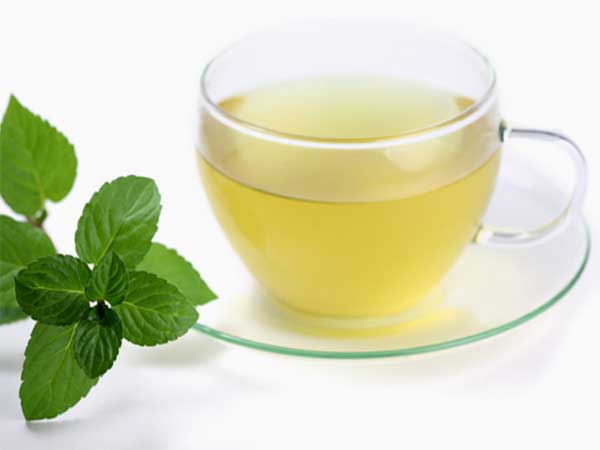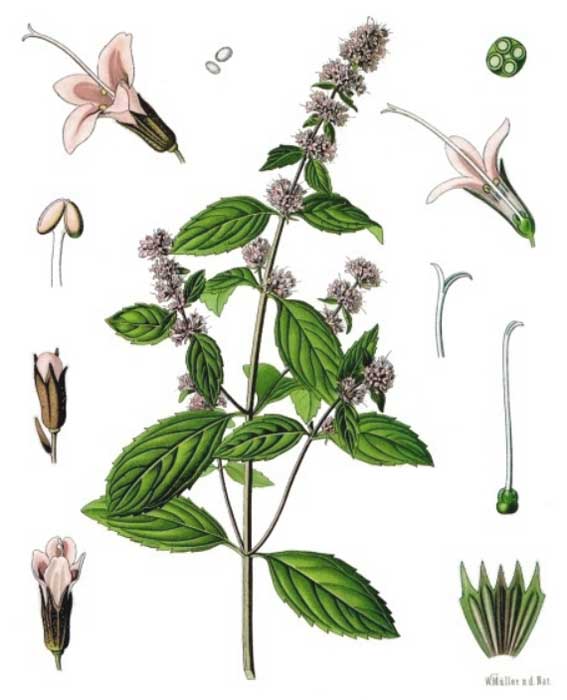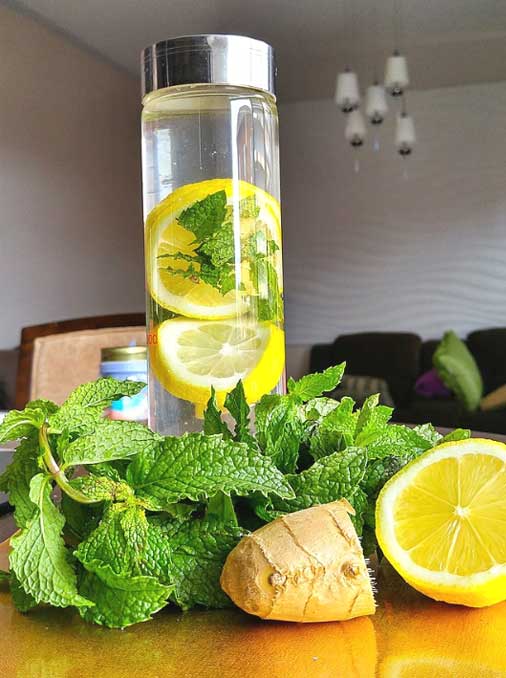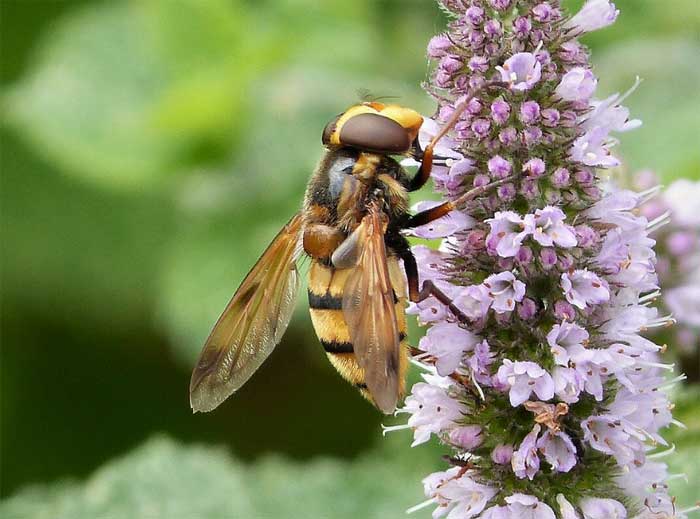Mint in herbal medicine and aromatherapy
Most everyone is familiar with mint (Mentha). From breath mints to herbal teas, mint is a staple ingredient in kitchens and medicine cabinets around the world.

Mints are more then a delicious flavoring.
- They are antibacterial and act to calm and sooth the nerves.
- They stimulate the brain (but constrict the blood vessels).
- Mint leaves and essential oils are used in herbal medicine and aromatherapy to treat everything from indigestion to depression.
Mint is especially useful when treating acne, burns, cold symptoms, dandruff, gout, varicose veins, liver problems, kidney stones, facial tics, nervous spasms, fatigue, nausea, vertigo, hiccups, anger management, depression, athlete’s foot, toothache, motion sickness, and jet lag.

Most all types of mint are used in herbal medicine and aromatherapy.
There are hundreds if varieties of mint including peppermint and spearmint. Many of them are distilled into essential oils.
As a medicinal herb, mint tea is used to stop stomachache and indigestion. It is a digestive tonic that helps prevent vomiting and promotes bile flow.
Mint promotes sweating, increases urine flow, and cools the internal organs.
in aromatherapy, mint is used to uplift the spirits and to treat a variety of health problems.
Mint is used commercially in cleaning supplies, air fresheners, and other products.
Spearmint (Mentha spicata) relieves stress.
Spearmint essential oil is a favorite of mine. It is light and refreshing.
The shapely, pointed leaves of spearmint produce oil that is anti-inflammatory, calming, and a good tonic for the digestive system.
Spearmint essential oil is used in aromatherapy to produce a feeling of joy and happiness. It is great for relieving stress and is useful in the treatment of lung problems like bronchitis.
Spearmint leaves are a great addition to summer drinks and hot teas. I love the taste of spearmint. It is one of my favorite herbal teas.
Peppermint (Mentha Piperita) is a common medicinal herb.
Often added to chewing gum, mouthwash, toothpaste, and candy, peppermint oil is a versatile essential oil.
The green leaves also have many medicinal properties. Peppermint tea and tinctures are used in the treatment of headaches, congestion, muscle spasms, gingivitis, and irritable bowel syndrome.
Peppermint is also used in the treatment of stomach problems, indigestion, and colon problems. Peppermint soothes the stomach, represses gas, stimulates bile flow from the gallbladder, and stops nausea. It is used to treat vomiting, colic, and hiccups.
Peppermint essential oil helps purify the air.
Peppermint essential oil is very cooling and stimulates the heart, brain, and pancreas. Peppermint essential oil helps regulate the female system.
It is used to disinfect the air in sick rooms, to cool fevers, and to help skin conditions such as eczema.
Mint essential oil uplifts the spirit.
Mint essential oil uplifts the spirits and is especially suited for the elderly. It brings feelings of happiness and relaxes tired muscles.

Mint boosts mental alertness while relieving anxiety.
Mint is a natural brain stimulant yet helps relax the body. It contains menthol, a rich volatile oil that is considered a mild anesthetic. Mint also contains tannins and “bitters”. These compounds kill many harmful microorganisms and boost mental alertness. They are also known to ease anxiety, stress, and tension.
Mint is uplifting and relaxing.
Peppermint can be taken internally in tea form or the essential oil vapors can be inhaled. The scent is uplifting and relaxing at the same time.
Like all herbs, mint is packed with nutrients.
Peppermint contains high levels of manganese, vitamin C and vitamin A. The herb also contains trace amounts of fiber, iron, calcium, potassium, magnesium, omega-3 fatty acids, riboflavin, and copper. Add leaves to salads for a flavor and nutritional boost.
Use peppermint essential oil to stop headaches.
For an excellent headache remedy, try combining peppermint essential oil with lavender essential oil. Dilute the mix with olive oil and apply to the temples every few minutes until pain is gone.
As with all essential oils, use with caution. too much, too often, has been shown to disrupt hormone production.
Mint improves blood flow.
Mint tea can be used as a wash to sooth irritated skin. It can help reduce pain and improve blood flow.
Growing mint
This video teaches us all about growing and storing mint.
Mint essential oil stops indigestion.
One drop of mint essential oil added to a glass of water will sooth indigestion, help get rid of gas in the stomach, and help stop vomiting.
Peppermint essential oil can be taken (one drop at a time) internally by people and pets.
Try lemon mint, apple mint, orange mint, and chocolate mint.
Lemon mint tastes and smells like lemons. It may also have the aroma of limes or sour oranges.
Other mints include apple mint, orange mint, Corsican mint, chocolate mint, and pineapple mint. The leaves and flowers are used to make delicious herbal teas.
Mint can be used in compresses for treating joint pain.
Mint is useful as a compress on inflamed joints and painful muscles. Find out about making compresses and other herbal products at home.
Mint can also help stop a toothache.
Flower tops are best for this purpose and should be pressed directly on the offending tooth.
Mint is also used to whiten teeth. Just rub fresh leaves on your gums and teeth for whiter teeth and fresh smelling breath.
Mint is often added to herbal baths for relieving congestion and stuffy nose.
More uses for mint
The essential oil of mint is good for bug bites, stings, and other itchy skin irritations. Dilute with water and apply to scabies, ringworm, or mild burns.
Mint and water may also be used as a mosquito repellant.
Mint essential oil is also used in massage for relieving tension headaches, fevers, and menstrual cramps (always dilute with carrier oil before using in massage).
Mint leaves make a refreshing tea.
Mint leaves are used in teas, beverages, syrups, cookies, candy, and ice cream. Mint is also used in breath fresheners.
To make mint tea, pick fresh leaves and steep in hot water for ten minutes before drinking. Mint may be added to any herbal tea to improve flavor.

Use mint as an insect repellent.
Bees love mint, but some insects avoid it. Place mint leaves around the house to help get rid of cock roaches, fleas, and moths.
Mint is also a good remedy to help relieve chigger bites. For itchy bites, add mint leaves to a hot bath (tie up in a bag first), soak whole body for 15 minutes, and then follow with an application of mint infused vinegar directly on bites.
Dried mint leaves may also be tied in cloth bags and used in the clothes dryer or linen closet.
Peppermint is a hybrid of spearmint and water mint.
Records show that peppermint was first cultivated near London in 1750. It is a hybrid of water mint and spearmint.
Peppermint grows abundantly almost everywhere.
There are two types of peppermint. Black peppermint has purple colored leaves and stems that contain high oil content. White peppermint has pure green leaves and a milder taste.
Honeybees love mint flowers.
Mint flowers are heavy nectar producers and thus attract many bees, butterflies, and other beneficial insects. A mild, delicious honey is produced by honeybees if there are enough plants.
Local mountain mint
In the North Georgia Mountains we have a type of wild mint. Old timers call it horsemint or mountain mint.
It is white looking and has tiny purple spotted blooms during August. The white tint almost looks like a powdery mildew but is the plants natural coloring. This wild relative can be used as a substitute for peppermint but is not as strong.
Most mints can be substituted for peppermint in recipes and herbal blends.
Several mints are native to North America.
Field mints such as mountain mint, horse mint, and corn mint are native to North America. They are a major source of commercial menthol and have more of a bite than other mints.

Mint plants spread quickly but can be smothered out by grass and weeds.
Mint loves the shade and spreads quickly by underground rhizomes. If you grow mint in the garden or flower border, it is best to plant in a container. Mint can rapidly take over and become a nuisance.
The plants like moist soil. Mint can be overgrown with weeds and bushes, so keep your mint patch clean. If weeds take over, the mint will die due to lack of sunshine, water, and nutrients.
Mint is a fast growing perennial. Mint grows well in pots or other out-of-the-way areas such as along fence lines. Mints make good companion plants, repelling insect pests and attracting beneficial ones. Try setting a large pot of mint beside rose bushes to repel aphids.
All mints have square stems.
All mints have square stems and opposite aromatic leaves.
Mint thrives in partial shade and moderately rich soil that is kept lightly moist. For healthy looking plants, cut flowering stalks before they go to seed.
Propagate by stem cuttings or root division.
Mint leaves are best harvested just before flowering. Fresh mint leaves should be used immediately or stored for a couple of days in plastic bags in the refrigerator. Mint can also be frozen in ice cube trays for later use.
For medicinal purposes, collect leaves and tops as soon as the flowers begin to open. Dry completely, and store in air tight containers for winter use.
Mint essential oil cautions
Never use mint essential oils without diluting. Never use it at night because mint essential oil may cause insomnia.
Do not use mint along with homeopathic remedies because it is considered an antidote.
Use pennyroyal with caution.
Pennyroyal is also a type of mint that must be used with extreme caution.
Some sources say pennyroyal essential oil can be used on pets to repel fleas and ticks, but it can cause severe reactions (in pets and people).
I consider pennyroyal essential oil to be a poison and do not recommend it for use in herbal medicine. Pennyroyal essential oil is also a uterine abortive, so never use it if you are pregnant!
Too much mint can cause fertility issues.
All essential oils can be harmful if used excessively. Do not use them in high doses or on a daily basis. Save mint essential oil for when it is needed especially if you are in your child-bearing years.
Do not use mint essential oil on babies or children. Research shows that some essential oils can disrupt hormones, decrease uterine health, and cause sperm deformities when used in excess.
Yes, mint tastes good! Still, try to limit its use. Do not use mint flavored toothpastes, mint mouthwashes, mint teas, or eat mint flavored candy on a daily basis. Save mint for soothing occasional indigestion and other health problems!
Science, mint and health
Studies show that mint can be used to fight everything from obesity to cancer.
Properties in mint have proven to fight many cancers including cervix, lung, and breast.
Many synthetic drugs are very similar to the phytochemicals in plants, plus they don't have the side effects.
Mint contains high levels of flavonoids that fight inflammation and free radical damage.
Mint essential oil has been shown to reduce pain caused by Caesarean section, reduce fever, strengthen the stomach, promote lung health, and reduce hemorrhoids. It can stop fungal growth and kill parasites, yeast, and bacteria.
Peppermint juice is also useful. Adding it to tea or other beverage helps reduce cholesterol and triglycerides levels.
Leaves and flowers are both made into different herbal products including teas, essential oils, and decoctions.
Mint contains high levels of menthol.
Menthol is waxy and crystalline with a color ranging from white to clear. It is solid at room temperature but melts easily when heat is applied.
Menthol acts to fight harmful germs and parasites. It also has calming effects on the nervous and digestive systems.
*Avoid peppermint in cases of chronic heartburn. Use caution when treating infants or children as the menthol may cause choking. Prolonged use of mint essential oil as an inhalant can irritate mucus membranes in the nose and throat.
Use all essential oils with extreme care. Excessive use of mint can reduce milk flow in nursing mothers. Mint essential oil should not be used by pregnant women.
Keep all essential oils away from the eyes. Do not take essential oils internally without consulting a qualified professional. Always dilute essential oils with good carrier oil and test on small area of skin before use.
Always consult with a healthcare professional before using any herbal remedy especially if pregnant, nursing, or taking other medicines.
Sources:
https://www.ncbi.nlm.nih.gov/pmc/articles/PMC7923432/
https://www.ncbi.nlm.nih.gov/pmc/articles/PMC4171855/
Blessings to you and yours!
Thanks so much for reading my blog. Jan.

*Note - the information on this website has not been evaluated by the Food and Drug Administration.
© 2005-2024 website design and content by Janice Boling